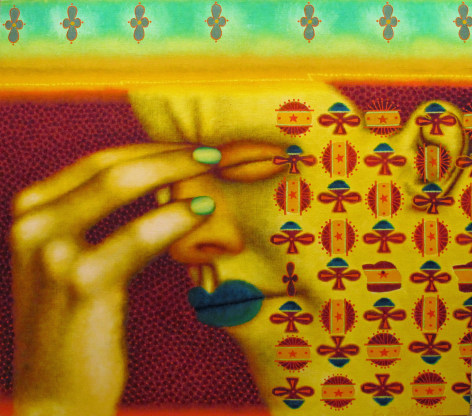
Ed Paschke
Migraine
1996
Oil on linen
36 x 40 inches

Marcos Bontempo
Untitled
2014
Paint, iron oxide, salt on paper
24 x 18 inches
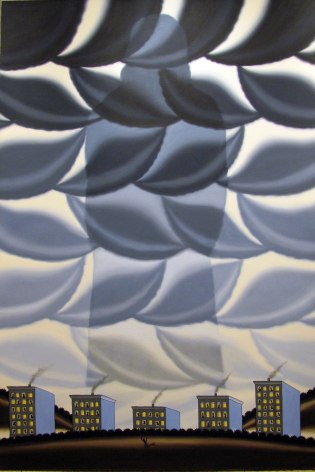
Roger Brown
Oral Roberts’ Vision of a Two Mile Jesus
1984
Oil on canvas
72 x 48 inches

C.J. Pyle
In Memory of Leech
2000
Pen on verso of LP album cover
12 x 12 inches
CJP 67

Henry Darger
Untitled (#99)
18 x 76 inches
Double sided, carbon transfer and watercolor on paper
A.“Tells Gen. Evans of experiences,, see following experiences.”
HD 5
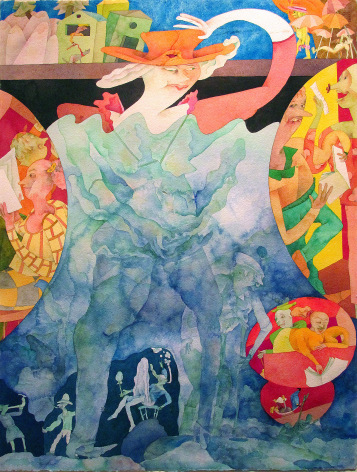
Gladys Nilsson
All At Sea
1990
Watercolor on paper
30.5 x 22.5 inches

Miyoko Ito
Sea Window
1968
Oil on canvas
48 x 28 inches
PD 620
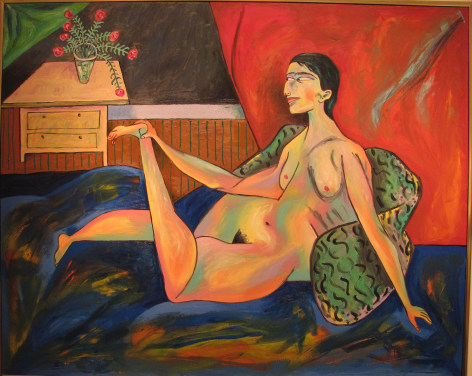
David Sharpe
Reclining Nude
1981
Oil on canvas
48 x 60 inches
DS 102
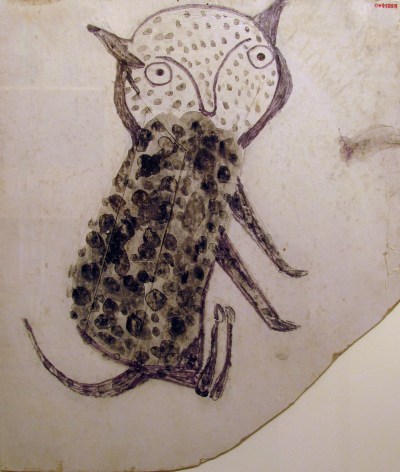
Bill Traylor
Spotted Cat
c. 1939 - 1942
Pencil and crayon on cardboard
12 7/8 x 11 inches
BT 176

Eugene Von Bruenchenhein
Untitled
Photo of Marie with crown
Black and white images
3.5 x 2.25 inches
EVB 005
Karl Wirsum
Soft Drink
1985
Pastel on paper
34 x 26 inches
PD 614
Adolf Wolfli
Untitled
1927
Pencil and colored pencil on paper
20 x 26.5 inches
Joseph Yoakum
John Davis Buffalo Ranch near McCook Nebraska
c. 1967
Pen, colored pencil on paper
12 x 18 inches
JY 82
Ray Yoshida
Untitled
c. 1990
22 x 28 inches
Founded in 1994 by dealers Colin de Land, Pat Hearn, Matthew Marks and Paul Morris as the Gramercy International Art Fair, and named after its initial location in the legendary Gramercy Park Hotel, The Armory Show acquired its present-day title following the fair's migration to the 69th Regiment Armory on Lexington Avenue in 1999. This new name was chosen in homage to the legendary 1913 exhibition by the same name that took place in the Regiment, famously showcasing avant-garde works by European artists previously unseen in America. The 1913 Armory Show, widely credited for bringing modern art to New York – along with its eclectic and unorthodox mix of genres, juxtaposing Vincent van Gogh alongside Marcel Duchamp and Edward Hopper – has been a source of inspiration for ensuing decades and continues to linger today, over 100 years later.
While its location at the 69th Regiment Armory was only temporary, the current Armory Show was inspired by the idea of presenting new art from around the world together under one roof in New York City. The fair moved to the West Side piers in 2001, originally Piers 88 & 90. In 2009, The Armory Show – Modern, a section devoted to 20th century master artworks, was introduced and The Armory Show made a new home on Piers 92 & 94. Today, Pier 92 hosts the Modern section while Pier 94 hosts the contemporary section, comprised of work by living artists.
Like the fair's previous locations, the piers feature prominently in New York City history and serve as a visual reminder of a significant time in New York's past, when the Hudson River was central to the city's transportation infrastructure. As the emergent auto industry gradually diminished the reliance on rail and waterways by mid-century, traffic to the West Side thinned. Businesses at the piers closed down and many were left to decay. Their desolate, frail structures could be dangerous territory to frequent, but also offered temporary homes to various artist projects, the most illustrious, perhaps, being Gordon Matta-Clark's iconic Day's End on Pier 52 from 1974. As with his characteristic building cuts, the artist, to use his own words, took "a decaying sad reminder of a previous industrial era and renovated it." While the police were quick to put an end to the huge, gaping hole cut in the far wall of the abandoned pier, thus letting in air, light, and reflections cast by the Hudson's sparkling water, the intervention stood as a visionary effort to revive the West Side waterfront, which was ahead of its time by over thirty years.
In the last decade, significant cultural redevelopment of the area has been underway. The Hudson River Park, extending from Battery Park to 59th Street, is the largest park to be created in Manhattan since Central Park (completed in 1873), and provides home to a marina, sports complex, driving range, canoeing club, and many other popular year-round attractions as well as a hub for ocean-bound ships and cruise liners such as The Intrepid, the Second World War aircraft carrier, which now houses a museum.
The Armory Show on Piers 92 & 94 has become an integral part of the cultural redevelopment of Manhattan's West Side. As a leading international art fair and a New York institution, The Armory Show continues to evolve as the premier destination for discovering and acquiring modern and contemporary art in New York.



